– This week on Wisconsin Foodie:
– Marshall: I’ve always really liked the interaction with people. I like dealing with people and I put really good food in front of people.
– Kyle: Chef Marshall of Skaliwags. How are you, man?
– How are we doing? Good to see you, to finally have you.
– I’m great.
– I grew up down South. It’s so different. We didn’t do the Wisconsin traditions which isn’t that we don’t like. It just wasn’t my traditions.
– Kyle: So where are we going to begin? Shrimp and grits, or scallops, or the likely spots?
– Marshall: We’ll show everybody how to eat shrimp like a Southerner. Pinch that tail right off.
– Jessica: Hey, Aric.
– Aric: Hey, Jessica.
– Good to see you.
– Good to see you, too.
– Can I help you with your family’s vineyards here?
– Absolutely. We age all of our dry reds down here. We have roughly 150 barrels. So, let’s track a cab.
– Jessica: Okay, that’s a serious wine.
– Narrator: Wisconsin Foodie would like to thank the following underwriters for their support:
The Dairy Farmers of Wisconsin are proud to underwrite Wisconsin Foodie and remind you that in Wisconsin we dream in cheese. [crowd cheering) Just look for our badge. It’s on everything we make.
Employee-owned New Glarus Brewing Company has been brewing and bottling beer for their friends only in Wisconsin since 1993. Just a short drive from Madison, come visit Swissconsin, and see where your beer is made.
Milwaukee’s landmark art deco hotel offers luxury accommodations, legendary hospitality, and world-class dining. Paired with the hotels roaring ’20s vibe makes The Ambassador a must-experience destination.
From production to processing, right down to our plates, there are over 15,000 employers in Wisconsin with career opportunities to fulfill your dreams and feed the world. Hungry for more? Shape your career with these companies and others at FabWisconsin dot com. Society Insurance. Small details. Big difference.
Edible Milwaukee magazine.
Also, with support of the Friends of Wisconsin Public Television.
[light jazz music)
[car passes)
[chickens cackling)
[drink filling)
[chopping vegetables)
[fruit popping)
[meat sizzling)
[light jazz music)
[upbeat jazz music)
[light upbeat music)
– Every once in a while, the lore of a restaurant actually matches up to its reputation. Skaliwags is exactly that. For many people, it’s on the way to Door County. But it’s absolutely worth the stop. I’m here to meet Chef Marshall Wiltfang whose father Chris originally started this spot. In what we would all affectionately call a dive bar. But what comes out of the kitchen is second to none.
[jazz music)
– I’ve got 32 seats and you’re sitting elbow to elbow. I’ve got four tables. So you know you call at 3:30 the day of and I hope to get you in the table. It’s hard to get a spot right away.
I’ve always really liked interaction with people. I like dealing with people. And I put really good food in front of people. You’re going to see smiling faces. Everybody that’s here enjoys being here. Even you’ll see me back there ’cause I’m 6’7″ so you’ll see my head towering over everybody sitting down. And I’ll be probably one of the first people to greet you.
I grew up down South and I played ball and had an offer to Georgia Southern. I just kind of wanted to get away. So, my dad’s kind of a gypsy. He’s moved all over the country. He’s cooked in all these different areas. My grandmother called him on Christmas Eve and said this place is in foreclosure and needed an owner. So he sent a low ball offer thinking, “I ain’t moving to Wisconsin in the middle of winter to start a restaurant.” And they took it. So the day after Christmas she called him and said she needed a check. He was like I don’t really have the money for it right now. So she fronted the money to him on a land contract and he paid her back in two. I moved up ’cause I wanted in-state tuition to Madison. I wanted to go be a lobbyist. I also wanted to kind of rebuild a relationship with my father and so I started working and washed dishes, you know, scrubbed floors. And so eventually started where I’d sous on Sundays. And then I eventually started cheffing on Sundays. And then I took over the kitchen about two years ago.
[folk guitar music)
– Kyle: Chef Marshall of Skaliwags. How are you, man?
– How are we doing? Good to see you, good to finally have you.
– I’m great. I have heard about this place for years now. And coming in, it doesn’t disappoint in appearance.
– Yeah, there’s definitely a lack of ambiance.
– I love it. I could roll in looking like you minus the chef coat and feel totally comfortable. And my money is as good as anybody’s and I love good food.
– Marshall: Come right off the beach. Come from the brewery, come from anywhere.
– Kyle: Yeah, cool.
– Marshall: Five-star dive bar.
– It announces it on the sign. I mean I’m not throwing you under the bus right now. You guys wear it on the sleeve. I’m picking up a major seafood theme. So where are we going to begin? Shrimp and grits or scallops are the likely spots.
– I was thinking shrimp and grits right away. It’s one of our bigger recipes.
– Kyle: And then, you are a southern guy. So as a self-respecting ex-Georgian you can’t not serve shrimp and grits.
– Marshall: You can’t not serve shrimp and grits, no.
– Kyle: So shrimp and grits is not an iconic Wisconsin dish.
– Marshall: It’s just good.
– Oh, yeah. In the South, it’s a hallmark of your personality in how you season your grits.
– Marshall: I mean I’ve got gator in there out of the Okefenokee. And then I’ve got andouille, a little bit of spice.
– Kyle: Right, right.
– So like putting those grits with the peppered bacon and the green chilis and all that. You know, it’s so different. We didn’t do the Wisconsin traditions which isn’t what we don’t like. It just wasn’t my traditions right away. It wasn’t my father’s traditions.
– There are no cheese curds on this chalk menu.
– I put cheese curds on there every now and again. But I top it with she-crab bisque and I do like a fried, like a Hawaiian perch, almost over the top of it. It’s like a Skaliwags poutine.
– So while you cook, can you give me a little cup of that bisque because, dude, I got to try this. It’s the height of summer. I’m here and I’m eating a warm cream soup. There shouldn’t be anything I’m drawn to. This is so good.
[blues music)
– So like now you could see they’re little shrimp.
– Kyle: Yeah, right, they’re little shrimp.
– Marshall: I can’t get those big ones in I mean.
– Those are prawns my friend.
– They’re black tiger shrimps. Yeah, they’re big and we just don’t, we don’t cook ’em a ton. So I’m actually going to flip these shrimp now so you can see that orange. So I’m just going to throw those on high heat. And then the only thing this really needs now is a little bit of cream. So he ate that she-crab bisque a little bit earlier. And I just put that right in the middle. You know, I let the stuff cook on the sides. And I come over here and I got bacon green chili grits tonight with a little bit of she-crab still in ’em. And then I’ve got this handy dandy little cast iron tool.
– Kyle: And you cook with cast iron ’cause you love the flavor.
– Marshall: I like the flavor and it’s got my heritage man. You know grandma’s fried chicken in a cast iron. I’ve got a couple up here from like 1912.
– Yeah.
– I’ve got old cast irons. We’re Southern so it’s different.
– Kyle: All right.
– Marshall: Pan’s hot. So, it just comes out man. You can watch, maybe got a little on the pan, but it’s the main factor. I mean you got shrimp. And you just those right in the middle.
– Kyle: Boom, wow.
– Marshall: Boom. And then we got a couple more things.
– As if this weren’t enough, then you have a couple more things.
– Yeah, bub. So you just got a little cheese. Everybody loves cheese.
– Kyle: What kind?
– So it’s a Parmesan Asiago Romano blend by BelGioioso.
– That’s perfectly seasoned.
It’s soft, it’s buttery. It’s just the right amount of starch.
– Yeah, they’re creamy, but they’re still good grits. So we always call, I always call it “blue collar risotto.” You got to get to the shrimp, too.
– Kyle: I’m gettin’ there. All right.
– Grab one of these shrimp. I’m going to show everybody how to eat shrimp like a Southerner.
– Kyle: Okay.
– So, you grab it like this. And you just pinch that tail right off.
– Kyle: Boom. You got chef hands though, my friend.
– Yeah, I got chef hands.
– Okay, I’m going for it nonetheless.
I mean, that’s so good. Mm-hmm. Those are temped perfect. I’d be happy with just the grits. No offense to the shrimp. But, I mean, it’s the sign of a good meal. Really good dish. Alright, it was a great start, where do we go from here?
– The next one we’re going to do is our cod. So it’s that same cast iron pan. Just clean and a little bit of oil.
– Kyle: So, this cod is not from any Great Lake?
– Usually, it’s a lot of cold water cods so this is out of Hawaii too like all of our fish.
– Kyle: So, you’re getting all of the seafood from Hawaii.
– You know, we had to raise our price points a little bit, but like we noticed that people wanted the best we could get. It’s what I try to do. So you start to hear it sizzle. It’s going to get that crisp layer. I’ll flip it over in a little bit once I see it’s kind of crusted. And I can just tell, you know? I’ve cooked so many of these pieces of fish that I can just tell when it’s done.
– You sound so authoritative but I still have to bring to afore that you are how old?
– I finally turned 21 this year.
– You’re like newly minted 21.
– Yeah, man, nobody ever guesses it.
– Kyle: And you’re the Executive Chef of the flagship of Skaliwags which has got this huge statewide reputation.
– Marshall: We’re putting our phenomenal products. Just with you know putting a little bit of season on this really good piece of fish.
– All right, so going from right to left.
– Marshall: It’s a sweet potato puree. Cumin, nutmeg, Wisconsin maple syrup and a little bit of brown sugar.
– I mean, that’s a nice potato.
– Yeah, it’s good potatoes.
– Yeah.
– And then you got the mashed potatoes. It’s a Yukon gold blend.
– All right, anybody that watches this show knows that I really don’t typically like mashed potatoes.
– All right.
– These look soft and silky, though.
– Yes, sir. They’re velvets.
– Yeah, it’s a mashed potato I can get behind.
– Yeah.
– But I am most intrigued by this cod.
Wow. That’s like a super meaty aspect of the whitefish that I grew up eating. And it has a lovely soft citrus aftertaste.
– Honestly, if it’s your first time eating fish here it’s going to be like eating fish for the first time.
– That’s really nice.
– Good.
– Thank you, chef.
– Yes, sir.
Let’s go, let’s cook a scallop. One of those things that we’re known for. These don’t take long but they, you got to flip ’em at the right time. While that’s going, I’m just going to go ahead and throw a crab cake. It’s just in a dish and we hand ball it out for every order.
– Marshall, give me the grandma story here because this crab cake’s got serious lore.
– My great grandmother would make my dad salmon cakes. You know, dad, as much as he loved to go back and have his grandmother’s salmon cake, he lived on the East Coast. So he’d go out and he’d catch crab and then she’d start making crab cakes.
– It’s your grandmother’s recipe based on her mother’s recipe.
– Yes, sir.
– Only with the re-working of crab because you were in Georgia.
– Marshall: You know so now I can see that the crab cake’s finishing up. The scallop’s going to be done in like 30 seconds. So I’m just going to put a little bit of mashed potatoes. Get a little bit of she-crab. I want to make sure I go from the bottom ’cause that’s where all the good crabs sit.
– Yeah, right, I’ve learned that with the bisque.
– Marshall: And then, cheese come right over the plate. You can see that scallop’s just starting to break apart.
– Kyle: That’s beautiful.
– So the crust has come out and then I’ve got the other side. So it’s got that citrus base. It’s not crusted, but it’s got nice acidity to it. It’s coming right back over here.
– Yeah.
– And so, this one, the crab cake will get the sauce.
– Kyle: This is the eel sauce.
– You know that soy teriyaki molasses base just kind of brings out that last note.
– Kyle: It’s a beautiful plate. And then here we go. Scallops, crab cake, grandma’s recipe. To be honest, even if I don’t love it I have to say something nice ’cause… it’s grandma.
Grandma’s crab cake. I’d like to meet this lady. This is great. There’s a lot of crab cakes out there, but none of them are this crab cake.
This is buttery. Great crisp. Love the citrus. It’s right where it should be. Yeah, nice. I’m going back to this crab cake though.
– Yeah, you got to go back to grandma’s crab cake.
– This one’s mine. It’s got a target on it.
– Yeah, we put a bullseye for you.
– That’s my bullseye, yeah. Right on.
So, this meal’s been fantastic. I didn’t grow up eating grits but now I’ve discovered grits that I deeply, deeply love. That was a dish that three months from now I’m just going to have this moment in the middle of my day where like, I got to get to Skaliwags and have those grits. And then follow it up with that coral cod. I just never eaten anything like it. Marshall, this has been amazing. Thank you, buddy.
– It’s been a pleasure to have you all out here.
– Kyle: I love that you brought a family story and a family flavor through your food today. You’re living it man.
– Marshall: Thanks, man.
– Kyle: Yeah.
[jazz music)
[uplifting guitar music)
– I’m here at Wisconsin’s oldest licensed winery, von Stiehl in Algoma, Wisconsin, to meet its owners Brad and Aric Schmiling. They’re going to show me how they’re taking the old and making it new without losing a sense of tradition. We’re going to start off in their family vineyards. I’m going to look for Aric and he’s going to give us a tour.
Hey, Aric.
– Aric: Hey Jessica.
– Good to see you.
– Good to see you, too.
– Can I help you with your family’s vineyards here?
– Absolutely, you came at a great time.
– Jessica: You ready, what are you guys doing today?
– We’re doing a little thinning. Getting the grapes a little bit more sun. So they can ripen a little bit more evenly. We have Marchal Foch planted. Marquettes as well as some Frontenac. So you can tell by walking through the Marchal Foch, the little bit tighter cluster here being a Marchal Foch.
– Okay.
– And this little bit longer cluster that’s a little bit more open is the Frontenac.
– Jessica: So those are all what we call Wisconsin hybrids.
– They’re all red grapes. You can see they’re green now yep, but they haven’t come to the point of veraison yet where they turn from the green to the red.
– Jessica: And you have a degree in enology right?
– Yes, yeah, from Michigan State. Some of these vines were actually small little cuttings that were started in the greenhouse at Michigan State University. And brought back here and planted on the family property.
– Jessica: So this is your parents’ property.
– Aric: Correct.
– Originally, was it your grandparents’, as well?
– Yes.
– Okay.
– It’s actually my great-grandparents’.
– Great-grandparents, wow. Whose house is that?
– So, it’s actually my parents’ house.
– Oh, okay, that’s where you grew up.
– So that’s where Brad and I grew up.
– So, you’ve watched this land grow and evolve just like the family business has grown and evolved. So, could a vineyard like this have so much success anywhere in Wisconsin?
– Geographical area does play a role in this vineyard itself. Being that we’re half a mile off of Lake Michigan, that does help to kind of moderate our temperatures. Because the warmth of Lake Michigan, within a half mile to a mile off the lake, keeps this area warmer. So, these vines, some of them have been unlucky to the winter and had to be replanted here and there. But for those wines, the Cabernet, the Riesling, the Chardonnay, you know, we have those grown California. The harsh winters are really the big thing, you know. They can’t survive 20 below. Weather is a challenge. Climate is a challenge in Wisconsin.
– Jessica: This has been great. I’d love to see the grapes in action.
– Aric: Let’s head into the winery and then have a few samples too.
– Jessica: Sounds like a good day to me.
– Aric: All right, let’s go.
[upbeat music)
– I can smell the wine.
– Yeah, welcome to our production facility.
– Thank you. Show me around.
– Aric: All right, will do.
So right now we’re making about 90,000 gallons a year. Just under 40,000 cases. Talking about a half a million bottles or so.
– Wow. I do my part. I definitely drank some of that.
– And we appreciate that.
– Jessica: Well, can I try a little of the wine in the tank?
– Absolutely. So, right now, this tank is our satin red. So, it’s going to be a little cold right now. It just did come out of our cold stabilization tank. This wine being that it’s grown in the Midwest is very low in tannin. So very fruity, silky.
– I’m going to give it a go.
That is great for a summer day. Well, are there any wines that go over to the aging cellar?
– Yeah, let’s go check it out.
– Jessica: All right.
– All right, so let’s enter our cellars. And we’ll be able to see where all of our reds are aged.
– Jessica: Oh, fantastic.
– We are in the cellars of von Stiehl winery in Algoma. This place has a ton of history. It was built in the 1860s as Ahnapee Brewery. And it was built for my great, great, great-Uncle Henry. Fast forward to the 1960s, Doctor Charles Stiehl was making cherry wine in his basement. At the time there weren’t any wineries in the state. The last one had shut down before prohibition. So he wrote to the state Department of Revenue and asked them to create the first winery license. So they did that and they gave him permission to start both producing and selling in the same property. And, you know, probably some of the people watching this remember that. Maybe they were here at that time. I love the stories from 30, 40, 50 years ago. People coming here on their honeymoon. They have these collectible gauze wrapped bottles on their shelves that they’ve had. You know, he really fathered the industry for Wisconsin.
Doc Stiehl sold it to Bill and Sandy Schmiling in 1981. I happen to know them well. They’re my parents. And my brother and I were five and six years old. We grew up in the business. A lot like some people would grow up on a family farm. They gave us the chores. I hated it. I hated growing up in a winery. But you know what? Doctor Stiehl and his wife, Jackie, came to visit us at my parents’ home for dinner one night. We were sitting at the table and just making conversation and he said, well, you know, Brad, what’s your background? What do you do? And I said, well, I went to school for theater and after a while, it just really wasn’t for me, and explained to him that I was struggling a little bit with the whole working at the winery thing. And he said, well, you know, Brad, working at a winery is a lot like theater.
It’s romance and putting on a show and entertaining people. And that’s when the light bulb went on. That’s when I said oh I can take all the things I learned in theater. And I can sort of create a new lens for people to see the business. You know a lot of wineries don’t show what’s behind the doors. A lot of wineries just do the tasting room. But, as kids that grew up in it, we want you to see it all. So my brother and I grew up in it. Aric took more of an interest in the wine making side. And I do the daily overseeing of all the business. It isn’t quite as clear cut as you might think. We make a lot of the decisions together.
– Jessica: This is great.
– Aric: Welcome to our cellars.
– Beautiful.
– We age all of our dry reds down here. We have roughly 150 barrels down here.
– When the wine does come down here and it has its constant temperature and humidity, what happens to the wine?
– Magic.
– Yeah, magic, right? You do your magic down here. Or your let the magic happen rather.
– Aric: We let the magic happen. You know it’s about the patience. We’re looking at usually a minimum of 16 months up to three years for the barrel aging to take place.
So, let’s track a cab.
– Jessica: I love it. So, where is this cab from?
– Aric: The grapes for this were grown in the Sierra foothills of California.
– Jessica: And then, the wine actually enters into the oak and back out of the oak as time goes on, right? So, it’s extracting the flavors actually from the oak staves.
– Aric: Yeah.
– Well, I really want to try this.
[laughing)
– Cheers.
– Cheers.
Mm.
That’s a serious wine.
– Thank you.
– Yeah, that is dry to the bone. And it’s got still lots of fruit on it. This is really great. Now, I love this– I’m going to finish this– but then, I’d also love to try something from Wisconsin.
– Aric: Yes, so we do have some wines in bottle from the previous vintage, so 2016.
– Jessica: Great, well, I’ll follow you.
– Aric: All right, let’s go.
– That’s a perfect spot.
– Well, like you said, you can’t pick a bad one out here.
– No, right?
[laughing)
So, what do we got here?
– So, we have two reds from the vineyard we were in this afternoon.
– Jessica: Wow, I love it. What are we going to start with? The Marchal Foch or the?
– Let’s start with the Stony Creek red.
– Jessica: Okay. And then, this is a wine that was also aged in the cellar with some oak.
– Aric: Correct.
– Okay. Mm, yeah, you definitely get that dark cherry on it, yeah.
Very dry with lots of dark cherry but also just great acid. It’s going to go great with food. So what do you like to eat with this?
– Actually, you know, the classic higher-acid pasta dishes with marinara sauce or something like that. But, actually, even something on the grill, you know? Whether it’s pork or venison even.
– Jessica: Fat and acid. Those are just like a marriage made in heaven.
– Absolutely, yeah.
[laughing)
– Jessica: Marchal Foch, am I saying that right?
– Aric: Yes.
– This is another what we call hybrid that is adapted to the Wisconsin cold winters and relatively cold climate.
– Correct. Yeah you know the Marquette that we just sampled is actually cold hardy down to 35 degrees below Fahrenheit.
– More cold-hardy than I am.
[laughing)
– Right.
– I’m not that good at going out in the cold.
– Aric: The Marchal Foch is, they rate it down to about 20 below.
– Jessica: Wow.
– So it’s not quite as cold hardy as the Marquette. But the Marquette has the cherry. A little bit of black cherry but Marchal Foch has more of the plum. We might get a little bit of blueberries, the darker stone fruits aromas.
– Definitely, it smells darker, deeper, rounder almost. Very different from the Marquette.
– Aric: But, yeah, more fruit flavor complexity. But still true to its fruit.
– Right, right. Well, this has been a very special day for me and cheers to you and your family for really taking what’s old, embracing it, and then infusing passion to lead Wisconsin wine into the future.
– Aric: Well, thank you for the compliment and hope you stop back again.
– Can I just stay here all afternoon?
– Sure.
– All right.
– We have two bottles of wine.
– I’m good for an hour.
[laughing)
– Marshall: And so, all of our food has layers. You know, it’s like eating an onion. You got to break it down.
– Kyle: I’ve never done that. I know people that have eaten them like that.
– You never had a Vidalia onion?
– Nope.
– Come on, man.
– I mean, yeah, I have but I’ve never eaten it like an apple.
– Eat it like an apple.
– No, never.
– Yeah, you can’t kiss your grandma after that ’cause after your breath stinks but…
– I don’t kiss my grandmother anyway. Hugs only.
– Hugs only?
– And who is this behind you? What is this?
– Well, this is uh…
– I’m getting a little spooked over here.
– His eyes are watching you.
– Ignore him, yeah, he’s watching me.
– So, Doctor Stiehl started collecting these back in the sixties. As a way to keep bad spirits out of the wine.
So he keeps watch over everything and, you know, it’s a little extra touch.
– Well, he’s done a good job so cheers to you Grandpa Troll!
– Cheers, great-grandfather.
– Woman: Wisconsin Foodie would like to thank the following underwriters for their support:
The Dairy Farmers of Wisconsin are proud to underwrite Wisconsin Foodie, and remind you that in Wisconsin we dream in cheese.
[crowd cheering)
Just look for our badge. It’s on everything we make.
Employee-owned New Glarus Brewing Company has been brewing and bottling beer for their friends, only in Wisconsin, since 1993. Just a short drive from Madison, come visit Swissconsin and see where your beer is made. Milwaukee’s landmark art deco hotel offers luxury accommodations, legendary hospitality, and world-class dining. Paired with the hotel’s roaring ’20s vibe makes The Ambassador a must-experience destination.
From production to processing right down to our plates, there are over 15,000 employers in Wisconsin with career opportunities to fulfill your dreams and feed the world. Hungry for more? Shape your career with these companies, and others at FabWisconsin dot com.
Society Insurance, Small details. Big difference. The Wisconsin Department of Natural Resources.
The Central Wisconsin Craft Collective.
Something Special from Wisconsin. Illing Company.
Edible Milwaukee magazine.
Also, with support of the Friends of Wisconsin Public Television.
For more information about upcoming Wisconsin Foodie special events, dinners, and tours, please go to WisconsinFoodie dot com. There you can sign up for our mailing list to be the first to know about our events and offerings. Also, get connected with us through Facebook, Instagram, and Twitter.
[light jazz music)
Search Episodes
Related Stories from PBS Wisconsin's Blog

Donate to sign up. Activate and sign in to Passport. It's that easy to help PBS Wisconsin serve your community through media that educates, inspires, and entertains.
Make your membership gift today
Only for new users: Activate Passport using your code or email address
Already a member?
Look up my account
Need some help? Go to FAQ or visit PBS Passport Help
Need help accessing PBS Wisconsin anywhere?

Online Access | Platform & Device Access | Cable or Satellite Access | Over-The-Air Access
Visit Access Guide
Need help accessing PBS Wisconsin anywhere?

Visit Our
Live TV Access Guide
Online AccessPlatform & Device Access
Cable or Satellite Access
Over-The-Air Access
Visit Access Guide
 Passport
Passport


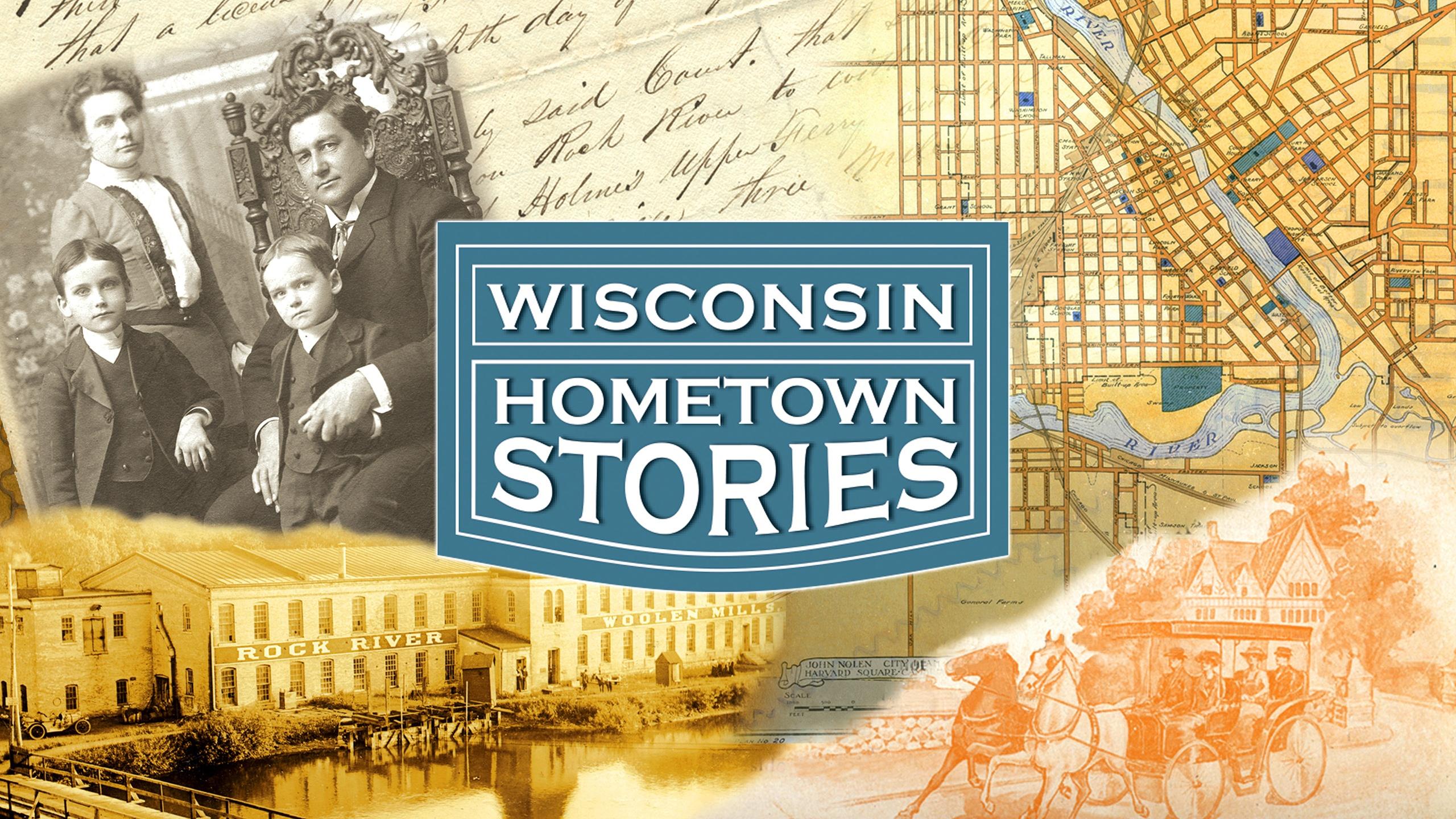



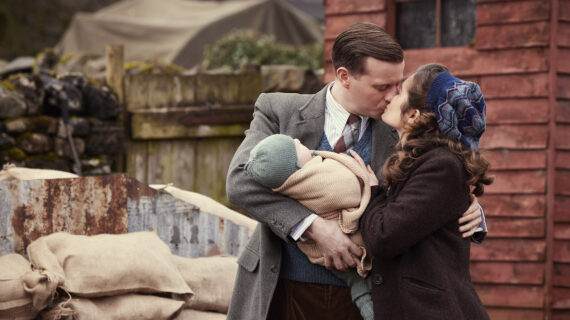

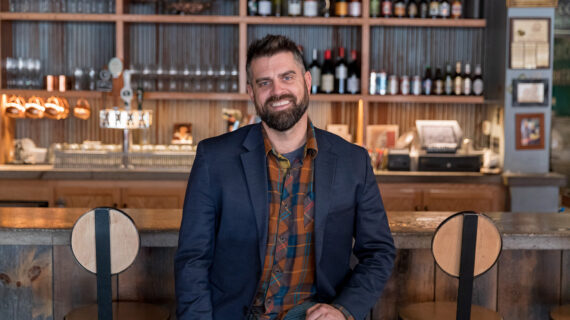
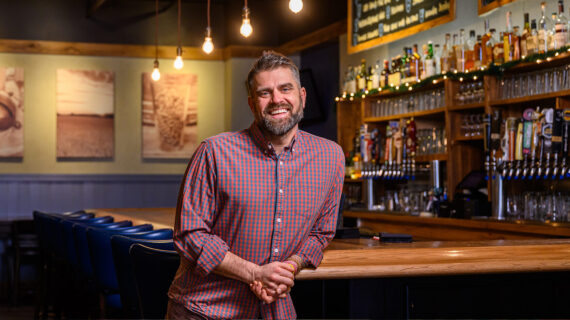
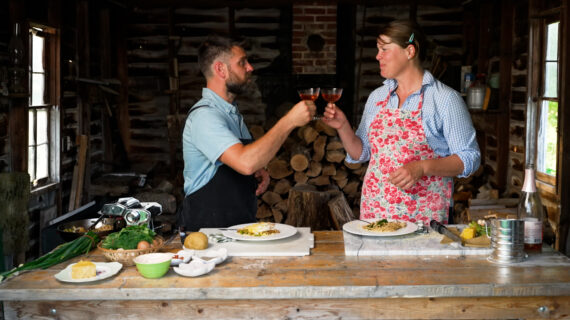
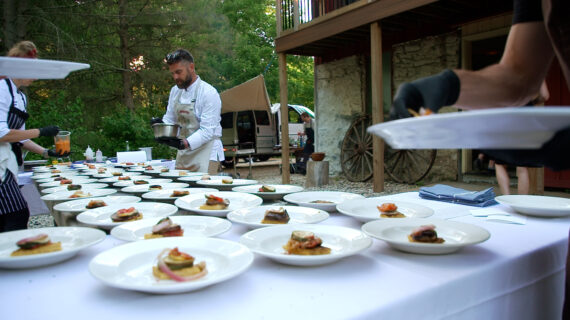
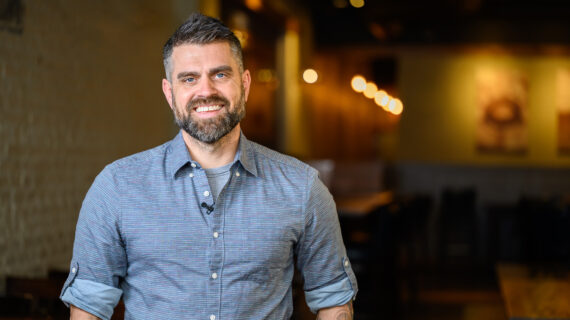
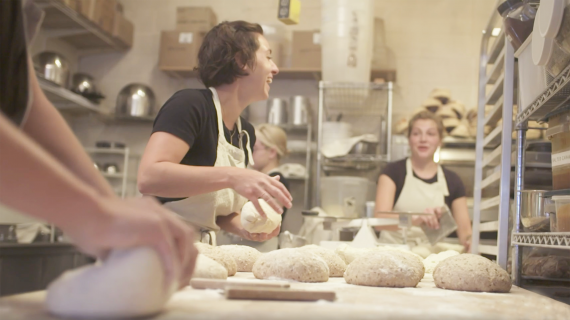


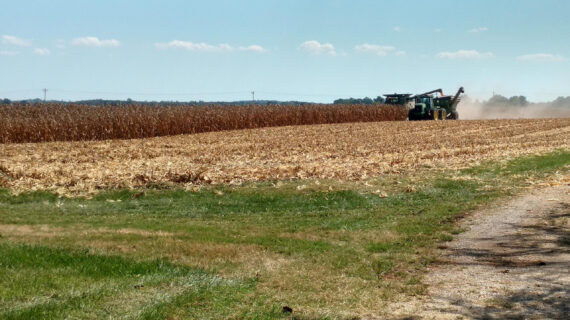

Follow Us